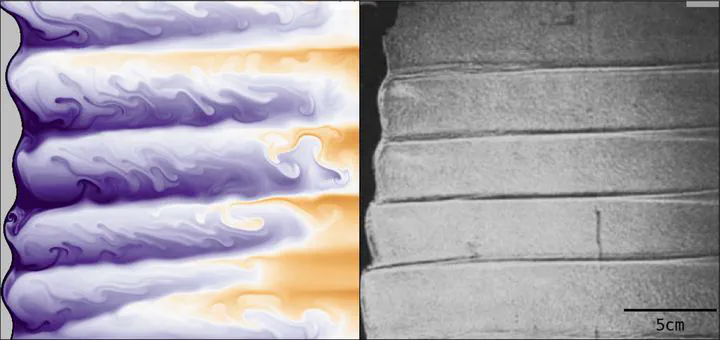Double-Diffusive Layer and Meltwater Plume Effects on Ice Face Scalloping in Phase-Change Simulations
Sep 18, 2023·,,,·
1 min read
Nicholas J. Wilson
Catherine Vreugdenhil
Bishakhdatta Gayen
Eric W. Hester
 Image credit:
Image credit:Abstract
Antarctic ice shelves are losing mass at increasing rates, yet the ice-ocean interactions that cause significant ice loss are not well understood. A new approach of high-resolution phase-change simulations is used to model vertical ice melting into a stratified ocean. The ocean dynamics show complicated interplay between a turbulent buoyant meltwater plume and double-diffusive layers, while the ice actively melts and changes topography. At room temperatures, the double-diffusive layer thickness is closely linked to ice scalloping. At lower, more realistic ocean temperatures, the meltwater plume becomes prominent with a laminar-to-turbulent transition imprinting an indent on the melting ice. The double-diffusive layer thickness is consistent with scaling prediction, while the real-world application demonstrates reasonably good matching of the scaling prediction for some Antarctic regions. Our study is a key first step toward the future use of high-resolution phase-change fluid dynamics simulations to better understand Antarctic ice shelves in a changing climate.
Type
Publication
Geophysical Research Letters
Click the Cite button above to demo the feature to enable visitors to import publication metadata into their reference management software.
Create your slides in Markdown - click the Slides button to check out the example.
Add the publication’s full text or supplementary notes here. You can use rich formatting such as including code, math, and images.